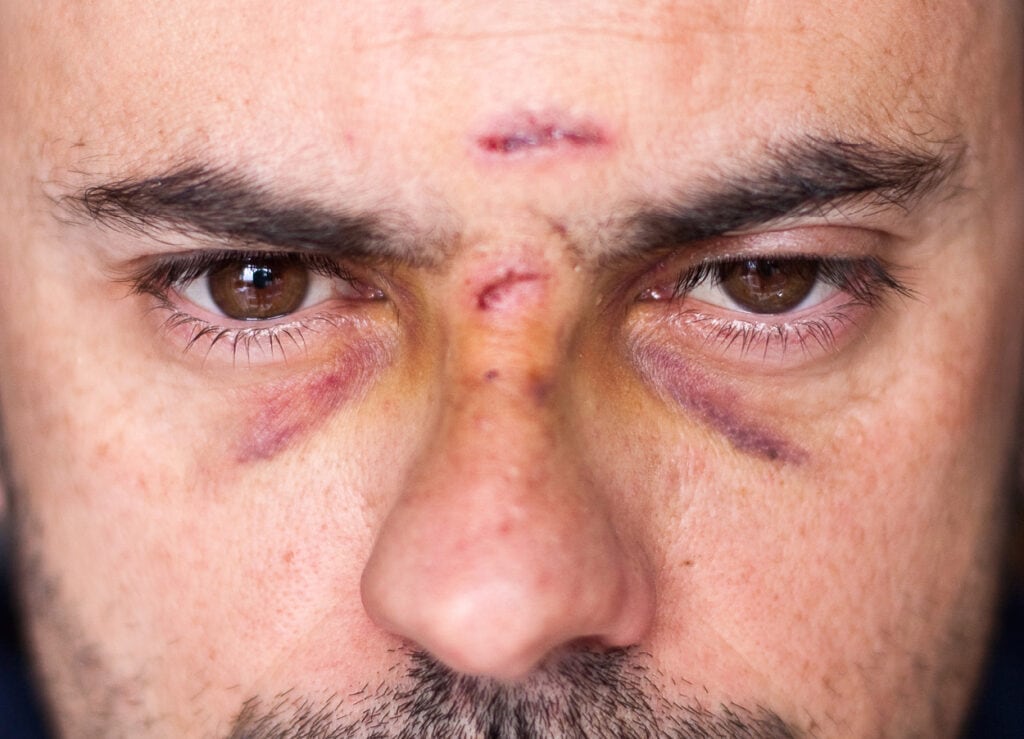Facial Lacerations
Types of Facial Lacerations
A laceration is a wound caused by the tearing of tissue. Facial lacerations are wounds that occur on the face. Facial lacerations can be caused by blunt force trauma or sharp objects, and often involve both soft tissues and the bony skeleton.
There are three types of facial lacerations: simple, complex, and comminuted.
Simple lacerations are wounds that involve only the skin. Simple lacerations do not involve any deep tissue or bone.
Complex lacerations are wounds that involve both the skin and deep tissues. Complex lacerations may or may not involve bone.
Comminuted lacerations are wounds that involve the skin, deep tissues, and bone. These are the most serious.

Treating Facial Lacerations
Due to the visibility of this type of injury, it often results in emotional stress for the patient. Facial injuries may involve both soft tissues and the bony skeleton. In order to optimize both the emotional and physical outcome, it is necessary to evaluate and assess the depth and severity of the injury in order to promptly determine the appropriate treatment. Lacerations should be treated as soon as possible. Ideally, a laceration should be treated within six to twelve hours following the injury. Delay can increase the risk of infection and may compromise healing.
Procedure
There are several methods that can be used to close a laceration. The decision on which method to use depends on the depth of the injury, the location, and the type of tissue involved. Facial lacerations often involve delicate tissues such as the eyelids, lips, or nose. In these instances, sutures (stitches) are usually required to ensure proper healing and minimize scarring. Facial lacerations that involve the bony skeleton may require the use of special screws or plates for fixation.
The goal of treatment is to promote proper healing and minimize scarring. Lacerations should be treated as soon as possible in order to optimize both the emotional and physical outcome.
